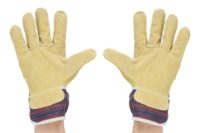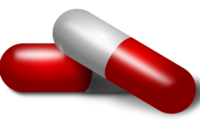Study finds surprising differences in CPR willingness

Only 46 percent of the women queried in a recent study said they’d be likely to give Hands-Only CPR in an emergency, compared to 54 percent of men who would. The American Heart Association (AHA) Hands-Only CPR Research Tracking Study found that gender difference becomes even more pronounced among younger people; 49 percent of women age 18 to 34 would be likely to give Hands-Only CPR in an emergency while 63 percent of men age 18 to 34 report the same.
Women are also less likely to receive bystander CPR in public, according to research from the University of Pennsylvania in Philadelphia. Concerns about inappropriate contact or causing injury may help explain why bystanders are less likely to perform CPR on women who collapse with cardiac arrest, according to recent research from the University of Colorado School of Medicine in Denver.
The study also identified “bystander” CPR rate differences in communities of color. Neighborhoods whose residents are mainly African-American or Hispanic are two to three times more likely to have cardiac arrest outside of a hospital. Yet, African-Americans and Hispanics are 30 to 50 percent less likely to have bystander CPR performed on them.
New video is aimed at women
The AHA is addressing the gender disparities with a new video that spotlights the crucial role of bystander CPR among women in light of research findings that show gender disparities in bystander CPR response in public. The video, produced in conjunction with Anthem Foundation, the philanthropic arm of Anthem, Inc., looks to encourage millennial women to learn Hands-Only CPR because they may serve as a first responder if they witness an out-of-hospital cardiac arrest.
The video called, “Shared Moments,” begins with two best friends at a café when one of the women experiences a cardiac arrest. The story then flashes through a series of vignettes that depict the progression of their friendship and its milestones, culminating with the best friend performing Hands-Only CPR. A call to action urges viewers to be the difference and learn Hands-Only CPR to save a life.
Hands-Only CPR has two steps performed in this order: first, call 911 when you see a teen or adult suddenly collapse, and then push hard and fast in the center of the chest to the beat of a familiar song that has 100 to 120 beats per minute. To learn more about Hands-Only CPR and watch short training videos, visit heart.org/handsonlycpr.
"Every second counts"
Over 350,000 cardiac arrests occur outside the hospital each year in the U.S. CPR, especially if performed immediately, can triple a person’s chances of survival. “Every second counts during cardiac arrest, but barriers such as misconceptions can stand in the way that may contribute to a delay in CPR or CPR not being performed at all,” said Audrey L. Blewer, PhD, MPH, American Heart Association volunteer expert and Assistant Director for Educational Programs at the Center for Resuscitation Science in the Perelman School of Medicine at the University of Pennsylvania. “Through public health education efforts such as this new video, I think the public will be emotionally moved to understand that cardiac arrest can strike at any time to someone you know, love or perhaps even a stranger and that bystander CPR needs to begin immediately. This is why it’s imperative we educate the public that there is no difference in performing CPR on a man or woman.”
The AHA says the new video will help raise awareness about the disparity gap that may prevent many Americans from living longer, healthier lives and educate them about the two easy steps of Hands-Only CPR to positively impact better health outcomes.
“Anthem Foundation is committed to providing communities across the country with access to educational, innovative programs and resources that engage individuals to lead healthier, more active lives,” said Lance Chrisman, executive director, Anthem Foundation. “Through our continued support of important initiatives such as the Hands-Only CPR lifesaving skill we can continue to teach individuals how every person trained is one more ‘first responder’ who can help save a life.”
Looking for a reprint of this article?
From high-res PDFs to custom plaques, order your copy today!






